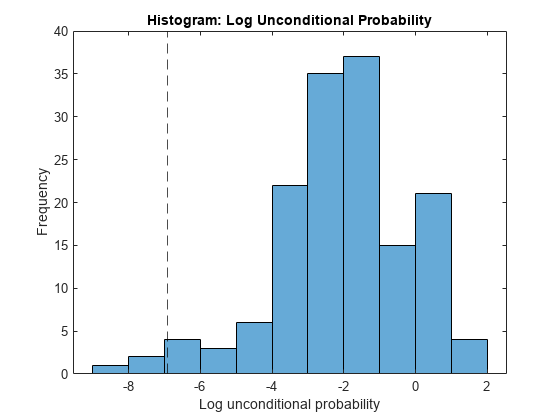logp
Log unconditional probability density for naive Bayes classifier
Description
lp = logp(Mdl,tbl)lp) of the observations
(rows) in tbl using the naive Bayes model
Mdl. You can use lp to identify
outliers in the training data.
Examples
Input Arguments
More About
Version History
Introduced in R2014b
